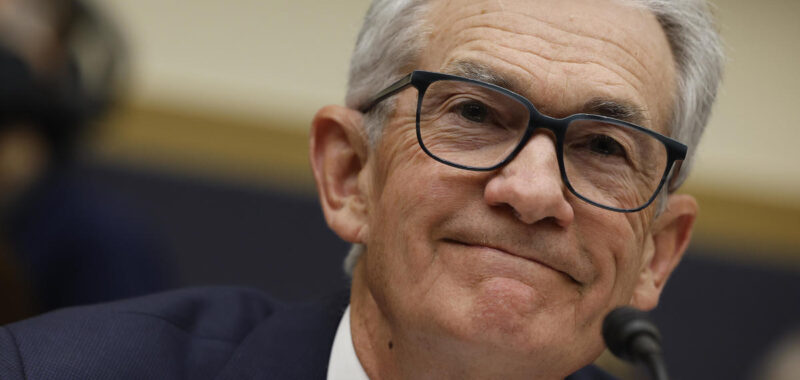The Federal Reserve on Thursday is expected to cut interest rates for the second time this year, with the decision coming less than two months after its surprise jumbo cut in September.
The Fed is expected to shave borrowing costs by 0.25 percentage points, or half the size of its September reduction, according to forecasts from economists polled by FactSet. That would bring the federal funds rate — the interest rate banks charge each other for borrowing money — down to a range of 4.5% to 4.75% from its current 4.75% to 5% level.
With the Federal Reserve’s preferred inflation measure dropping to 2.1% last month, just shy of the Fed’s 2% goal, the central bank is easing off the brakes it applied when inflation hit a 40-year high during the pandemic. High borrowing costs have made it more expensive to buy everything from homes to cars.
If the Fed cuts rates by 0.25 percentage points on Thursday as predicted, the move will provide some added relief for consumers, although the initial benefit will be small, experts say. The Fed is expected to continue cutting rates at its next several meetings, which could snowball into bigger savings for borrowers.
“Once a few more cuts happen over the next few months, the impact will add up to something that moves the needle for the average person struggling with debt,” said Matt Schulz, LendingTree chief credit analyst, in an email. “For now, however, the effect of these cuts won’t be very noticeable.”
Here’s what to know about Thursday’s Fed meeting.
Is the Fed going to cut interest rates?
Yes, the Fed is expected to shave its benchmark rate by 0.25 percentage points on Thursday, November 7, according to economists polled by FactSet.
“Ongoing price and wage growth disinflation along with strong productivity growth should favor a gradual recalibration of Fed policy with a 25bps rate cut post-election following an outsized 50bps ‘catch-up’ rate cut in September,” noted EY chief economist Gregory Daco in an October 31 report.
Daco expects that the Fed will cut rates by an additional 0.25 percentage points at every meeting through June 2025. That will bring the federal funds rate to 4.4% in December and 3.4% in June.
What time is the Fed rate decision?
The Fed will announce its decision at 2 p.m. ET on Nov. 7, followed by a press conference with Fed Chair Jerome Powell at 2:30 p.m.
The next Fed rate decision will be announced on Dec. 18.
How low will rates go in 2024?
The Fed is expected to cut its benchmark rate to a range of 4.25% to 4.5% at its December meeting. That would reflect a full percentage point cut from its pre-September level, when the federal funds rate was at its highest in more than two decades.
But that doesn’t mean mortgage rates or other borrowing costs will decline to that level, as lenders like mortgage companies and credit card companies make money by charging higher terms to consumers than the federal funds rate.
Even so, borrowers should see some relief. Already, credit card rates are slightly lower, although they still remain close to record highs, according to Schulz.
“While they’ll almost certainly continue to fall in coming months, no one should expect dramatically reduced credit card bills anytime soon,” he added. “Unless the Fed dramatically accelerates its pace of rate cuts, it’ll still be a while before these reductions add up to more than just a few dollars per month coming off your bill.”
Will mortgage rates drop?
Despite the Fed’s September cut, mortgage rates have increased over the last month, with the average interest rate on a 30-year fixed-rate loan sitting at about 6.72%, according to Freddie Mac. That’s up from a September low of 6.08%.
Even though the Fed’s rate decisions impact mortgage rates, home borrowing costs are also affected by economic trends such as unemployment. Meanwhile, Treasury yields have been on the rise due to concerns about rising U.S. debt and the presidential election.
“As long as investors remain worried about what the future may bring, Treasury yields, and, by extension, mortgage rates are going to have a tough time falling and staying down,” noted Jacob Channel, senior economist at LendingTree.

